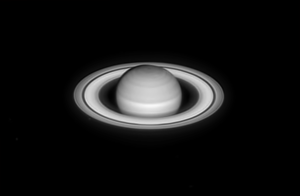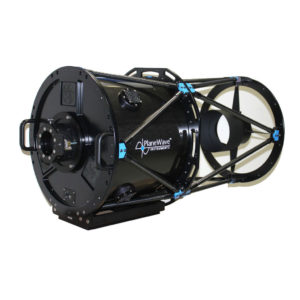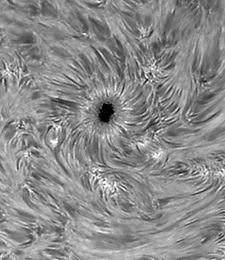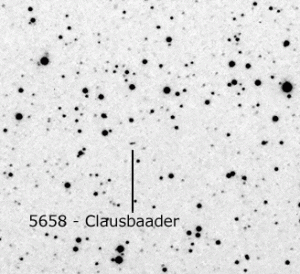Author Archives: Wolfgang Paech
Dipl. Ing. Wolfgang Paech has been practicing astronomy for more than 50 years. In addition to his many experiences with observatory domes of all kinds, his core areas are the Sun and the Moon. On the german Website www.chamaeleon-observatory-onjala.de you will find a complete moon atlas, recorded with his standard technique. But even in terms of Deep-Sky and Planetary imaging, as a veteran astrophotographer for many years, nobody can fool him.
The 50+ years of amateur astronomy with many other areas, such as the restoration of historical amateur telescopes, polar light trips and much more are prepared on his private german website at www.astrotech-hannover.de.
-
Experiences with observatory domes from Baader Planetarium and other brands
This entry was posted on August 7, 2019 Last modified on February 19, 2024.
For many years now Baader Planetarium has been asking me from time to time to put on paper my experiences with observatory domes which I had to deal with during my life as an active observer and user of observatories. I finally wanted to fulfill this wish and have summarized my experiences here ... I'd like to say a few words about my background: My amateur astronomical and technical experience with classic observatory domes began in 1967 when I joined the Berlin Wilhelm Foerster Observatory (WFS). Im Laufe weniger Jahre – neben Sternwarten- und Planetariumsveranstaltungen – wurde ich dort so etwas wie ein "freiberuflicher" technischer Mitarbeiter. Ich habe dort bis zum Ende meines Studiums Ende 1987 eng mit Werner Nehls (Witte & Nehls, Konstrukteur die...
-
The Encke Gap in Saturn’s ring system - imaged with only 17" aperture
This entry was posted on December 18, 2018 Last modified on February 26, 2024.
On 28 July 2018 around 22:00 UTC we obtained the best image of the planet Saturn so far. It was taken through the 17" Planewave Astrograph of the Rooisand Observatory in Namibia. The imaging camera was a ZWO ASI 290M with 2.9 µm pixel size. The primary focal length of the telescope was extended by a factor of 1.7 with a Baader Q-Turret Barlow lens element, the equivalent focal length was about 5 meters. A total of 3000 single images were taken, of which 10% were stacked. A Baader IR pass filter was used to calm the seeing condition. After processing the raw sum image, a thin black line appeared in the outer ring area, which seemed to be the Encke Gap in the A-ring....
-
Hints + tricks for high-resolution lunar and planetary photography with Baader Planetarium accessories
This entry was posted on March 19, 2018 Last modified on February 27, 2024.
Hints + tricks for high-resolution lunar and planetary photography with "lucky imaging technique" and a video camera - a short workflow for Schmidt Cassegrain telescopes and Baader Planetarium accessories Pictures often say more than a thousand words ... ... again and again I am asked how I make my highresolution lunar and planetary shots. Therefore, here is a brief description of the equipment and following a few hints + tricks to the "workflow" for shooting and image processing. Read here the Hints + Tricks for high-resolution lunar and planetary photography with "lucky imaging technique" and video camera.
-
Detailed Customer Review on CDK 17" PlaneWave Astrograph
This entry was posted on March 9, 2018 Last modified on February 27, 2024.
Dear Mr. Baader, I am happy to comply with your request and share with you my criteria that led to the purchase of the 17 inch telescope from Planewave, and following my experience with this telescope. Since this was a rather complex topic, please forgive the long text and its extent , which certainly clearly exceeds a "normal" customer judgment. Download: detailed review on CDK 17" PlaneWave Astrograph (pdf-file) Decision criterions for the choice of the Planewave astrograph were primarily: robust mechanical construction of the whole telescope, fixed installation and collimation of primary mirror and field corrector at factory, stable secondary mirrorcell, easy adjustment of the secondary mirror, easy control of distance between the main and secondary mirror withRonchi test, good focus stability with slight...
-
APOD: Trifid nebula taken with PlaneWave CDK 17 on Rooisand Observatory
This entry was posted on October 16, 2017 Last modified on February 28, 2024.
Impressive image, taken with PlaneWave CDK17, chosen as APOD (2017 October 20) Convince yourself of the high image quality of the combination CDK 17 and TV Reducer In spring of 2013, the turnkey "Rooisand Observatory" in Namibia, a 3.2 meter Dome, received latest equipment and technology: A new telescope combination consisting of an Astro-Physics GTO 1600 mount equipped with a Planewave CDK 17", a Zeiss APQ 130 / 1000m and a TEC APO 110 FL together with a wide range of optical and photographic accessories The Trifid Nebula in the constellation Sagittarius is one of the absolute highlights in the sky. The combination of red emission nebula, blue reflection nebula and dark clouds form one of the most beautiful nebula region in the southern Milky Way. The...
-
An experience report on the Baader Telecentric System TZ-3 and the Research Grade (RG) Telecompressor (TC) 0.4
This entry was posted on July 12, 2017 Last modified on February 27, 2024.
An experience and observation report on the new Baader Telecentric System TZ-3 and the Research Grade (RG) Telecompressor (TC) 0.4 for solar observation in the H-alpha light with SolarSpectrum filters download the complete review (pdf) Introduction Successful H-alpha-observations of the sun with narrow-band line filters from the manufacturers “SolarSpectrum” and / or "DayStar" require an almost parallel beam of light with a focal ratio of approx. f/30 directly in front of the filter, otherwise the filter will not work properly. This is not so easy with today's fast optical systems, which work around f/7. Such an opening ratio can be achieved either by masking (reducing) the front lens opening or by parallizing the optical beam with a "telecentric system" (TZ). * TZ: See also the...
-
Baader Optical Wonder – a real optical wonder
This entry was posted on January 12, 2016 Last modified on February 26, 2024.
Shooting the Moon – in bright daylight with a Celestron SkyRis 445 M through a C14 SCT and a Baader IR Pass-filter Dear Baader Team, When I returned to Namibia this spring, I found my favourite planetary Celestron 14 SCT-OTA in a catastrophic condition. The Schmidt-corrector-plate was looking just plain filthy since someone had omitted to properly close the dust cap during all the rainy season. The telescope is located at the Onjala Lodge. The Lodge is a typical Namibian guest lodge, located approximately 80 kilometers east of Windhoek. The telescope is commonly used for public viewing with guest of the lodge, but can also be rent by experienced amateur astronomers. The below image shows the main buildings of the lodge. The C14 is set up in the...
-
Observation: Minor planet Clausbaader (5658)
This entry was posted on September 15, 2015 Last modified on February 28, 2024.
From Dipl.-Ing. Wolfgang Paech – Onjala- and Chamäleon Observatory, Namibia For this year's longer stay in Namibia we planned to photograph the minor planet (5658) Clausbaader. It had a high altitude in the evening sky, close to Saturn. The series is intended as a small tribute to Mr. Claus Baader, the founder of Baader Planetarium in Mammendorf, who was one of the leading personalities in the field of amateur astronomy and public education in the last century in Germany. Read more under Company History. The images were captured at the 150mm Zeiss APQ refractor at Onjala Observatory and an "ancient" SBIG ST2000-XM. After completion of our "Project Pluto" - the experiment to take Pluto with a classic 2 inch telescope - first test images were...













